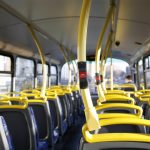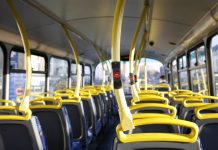London is known for being a city of countless traditions. This isn’t surprising, a city that has built up just under 2 millennia worth of history will undoubtedly have echoes the past emanating from its streets. Whether it’s the buildings lining the streets that date back centuries, or the changing of the guard at the Tower of London, you can find history on every street corner. Every building, every street has it’s own unique story.
Another aspect of the city that has managed to retain a long history, is its complex transport network. The lifesaver of the commuting community, the transport options of London making travelling over 15 miles as easy as sitting on a chair, and gives you countless routes to every corner of the city. Whether it be by tube or the newly developed Santander Cycle, the London culture of public transport rivals any in New York or Tokyo.
Whilst New York is home to the yellow cab, London’s taxi culture dates back far further than the iconic American city.

Whether you’re visiting the Montcalm London City Suites for the first time or the hundredth, it’d be hard to miss the broad array of black cabs that still dash around the streets of the city. Whilst many other modernised taxi services have capitalised on the now cemented app culture, the black cab has still managed to retain its identity in a rapidly changing city.
What is a Black Cab?
The classic Black Cab is a hackney carriage that is distinguishable by its higher ceilings and curved sides. The history of the London black cab dates back to the 17th century when horse-drawn carriages for hire were ordered by an act of parliament. Since 1654, these coaches were rentable by London locals and started to grow exponentially until their motorisation at the beginning of the 20th century. With the last horse-drawn model being taken out of service in the 1940s, the hackney carriage car became one of the most recognisable vehicles on the London streets and rivalled the classic red bus in its iconic London status.
Experts in navigating the city
Black cab drivers in London do not use satellite navigation, and so need to learn the routes of London by heart, ensuring that they can drive their passengers to their destinations using the quickest routes possible. This tradition and testing of “the knowledge” mean that in one year only around a third of applicants for black cab licenses will pass. This means that if you’re travelling from a restaurant in Barbican to Heathrow Airport, your black cabbie will know the exact route to get you there in the shortest time possible.
Black Cabs and Bowler Hats
One unique fact about the Hackney Cab is that dating back to their horse-drawn equivalents in the 17th century, they were required to be tall enough to fit a person wearing a bowler hat. Whilst not many cab users will be wearing a bowler hat in modern-day London, this tradition has carried on through the generations and ensures that hackney carriages have higher than normal roofs.
Most black cabs are owned by the drivers
When black cab drivers pass the knowledge, they’ll probably have bought or will buy the cab outright. This means that each cab is a private entity in and of itself, the cab driver effectively going freelance with their hackney cab as their “shop”.
There are over 25,000 black cabs
The number of black cabs has risen from its original 70 in the 17th century. Despite the existence of competing companies like Uber, there are still tens of thousands of black cabs on the streets of London.
Black Cab “green huts”
In the 19th century, Cabmen’s shelters were set up in green huts around the city, ensuring that there’s a place for cabbies to rest and eat during their long working days. Thirteen of these still exist and are the reserve of black cab drivers. With food and drink available, these have been set up by the Cabmen’s Shelter Fund, and have annual open days for the public.
Black Cabs don’t have to give you change
Don’t worry, they usually do! But Black Cab drivers are not permitted by law to give change. Many black cab users do round up to the nearest ten, but if you require change, the driver will oblige.
The original black cab has been retired
There have been a variety of hackney cab models over the years. With the first being the Austin FX4 in 1958, the cab has undergone many changes, and in recent years more energy-efficient Mercedes and Nissan models have been introduced in a bid to cut pollution in the city.
Black cabs are exempt from the ULEZ
This year has seen the start of a programme in the city centre, aiming to tackle pollution and air quality problems. Many vehicles driving through the Ultra-Low emission Zone will have to pay a congestion charge. However, due to their heritage, black cabs have been exempt from this and continue to run through London’s city centre without paying the fee. Great news then, if a black cab driver is taking you to one of the many luxury London hotel suites.
BAME black cabbies are growing fast
Whilst London is one of the most diverse cities in the world, black cab drivers have until recent years been comprised of about 93 per cent white males. Throughout the last five years, this has changed drastically as in 2013, the intake of BAME drivers rose to 35 per cent of newcomers to the business.
Is the top light illuminated?
You’ll know your black cab is available as there is a yellow or orange light on the roof which will be illuminated. If it’s dark, the cab is in use or not on duty. This makes it much easier to know whether you can hail down a ride or not.
Black Cabs are the only taxi you can legally hail down
Black cabs are also the only taxi in the city which can be legally hailed down on the street. Whilst all other taxi services are called by phone or app, the black cab can be pulled over for quick and simple use.
Now that you know everything there is to know about London’s iconic Black Cabs, you’ll have no problem navigating the city using The Barbican Rooms as your base.









